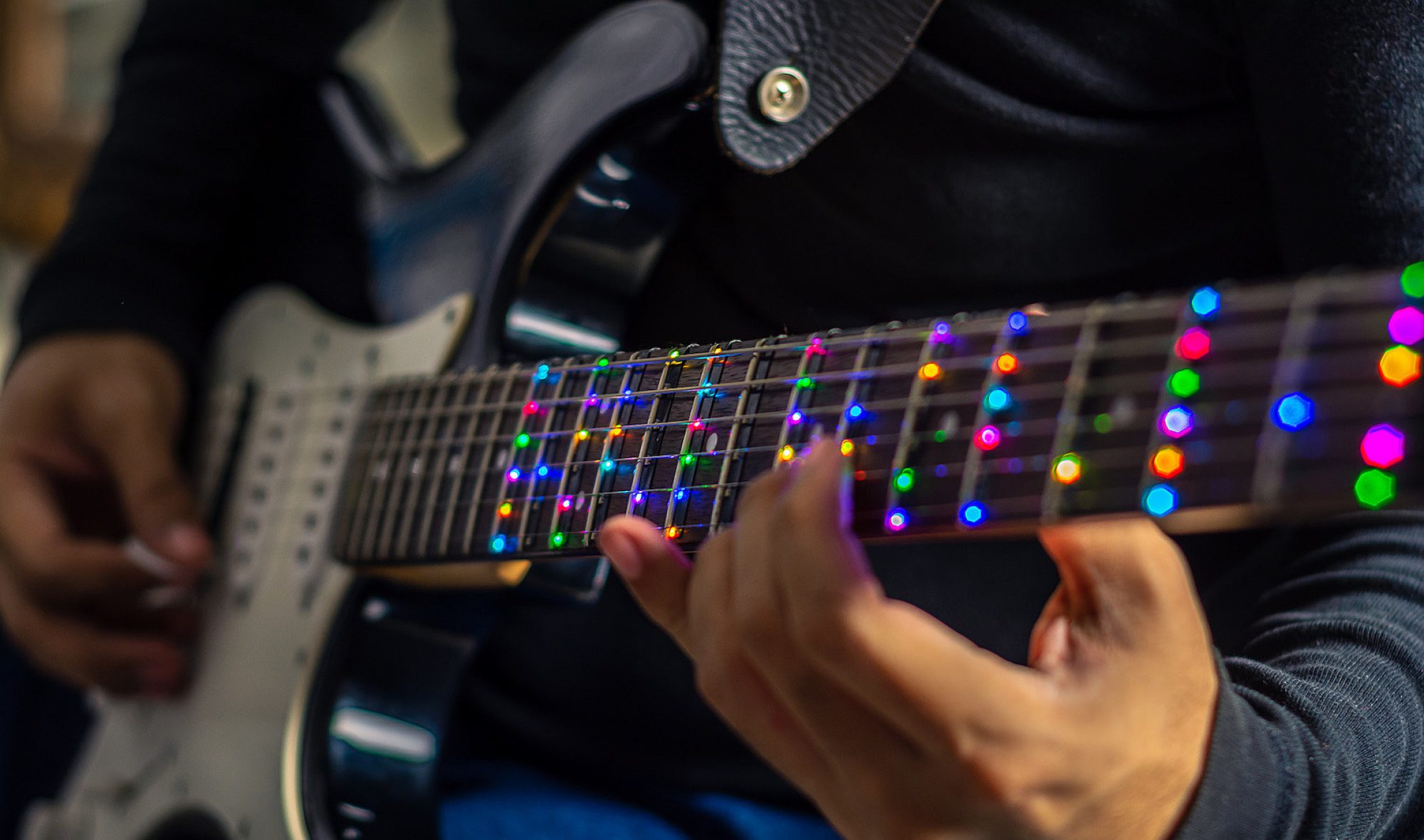This past week, I worked on 2 main tasks:
- Writing the fretboard & strum detection software
- Implementing a first pass at the 2 training modes for the user experience.
After Owen could fix the fret detection hardware with RC filters on the digital lines, I wrote code to sample the fretboard and pick. The involved applying a voltage stimulus to each fret in a serial fashion, reading each of the 4 strings, and repeating 14 times. This whole process takes under 1 millisecond, which is good. The sampling is done every 10ms.
As for strum detection, we decided to use an electrified pick. The PGIO connected to the strings senses a high voltage when the pick contacts the string. This sampling is done every 10ms, and a “strum” is detected when the pick leaves the string (i.e. when the previous “strum-sample” detects the pick on the string but the current sample doesn’t) and it has been sufficiently long (10ms) since the last strum (this is software debouncing). Since the Teensy itself uses a GPIO pin to apply a voltage stimulus to the pick and reads the return signal on the strings with 4 GPIOs, there is no need for having a strum interrupt. So, I removed that interrupt.
After talking as a group, we have determined the user experience should consist of 2 selectable modes: “TRAINING” and “CONTINUOUS” modes. In TRAINING mode, the system will wait for the user to play the lit-up note before lighting up the following note. Here, the user’s timing in playing the notes is not critical because the point of this mode is to show the user where the notes are, not when to play them. In CONTINUOUS mode, the system will not wait for the user to play a note; instead, it will continue flashing notes on the fretboard at the rate indicated by the MIDI file. The system will keep track of the time between when a note should’ve been played and when it was actually played, and store the difference as a statistic.
The following pictures show the code for the 2 training modes.
TRAINING mode:

CONTINUOUS mode:

Since Owen had to take the hardware to do hardware development with the newly arrived Pi-Hat PCB, I didn’t get a chance to test my code for the 2 user experience modes. But this is okay since I could still write the code, and hopefully, next time we meet, it will just be a debugging session instead of spending time writing the code in the first place.
Overall, I was able to recover from 2 tasks that slipped:
- The task “Able to read finger placement sensors on fretboard PCBs” is now finished
- The task “Able to read in strum signal” is now finished
Upcoming tasks include testing the 2 user modes and integrating the rest of the interrupts with Ashwin.
